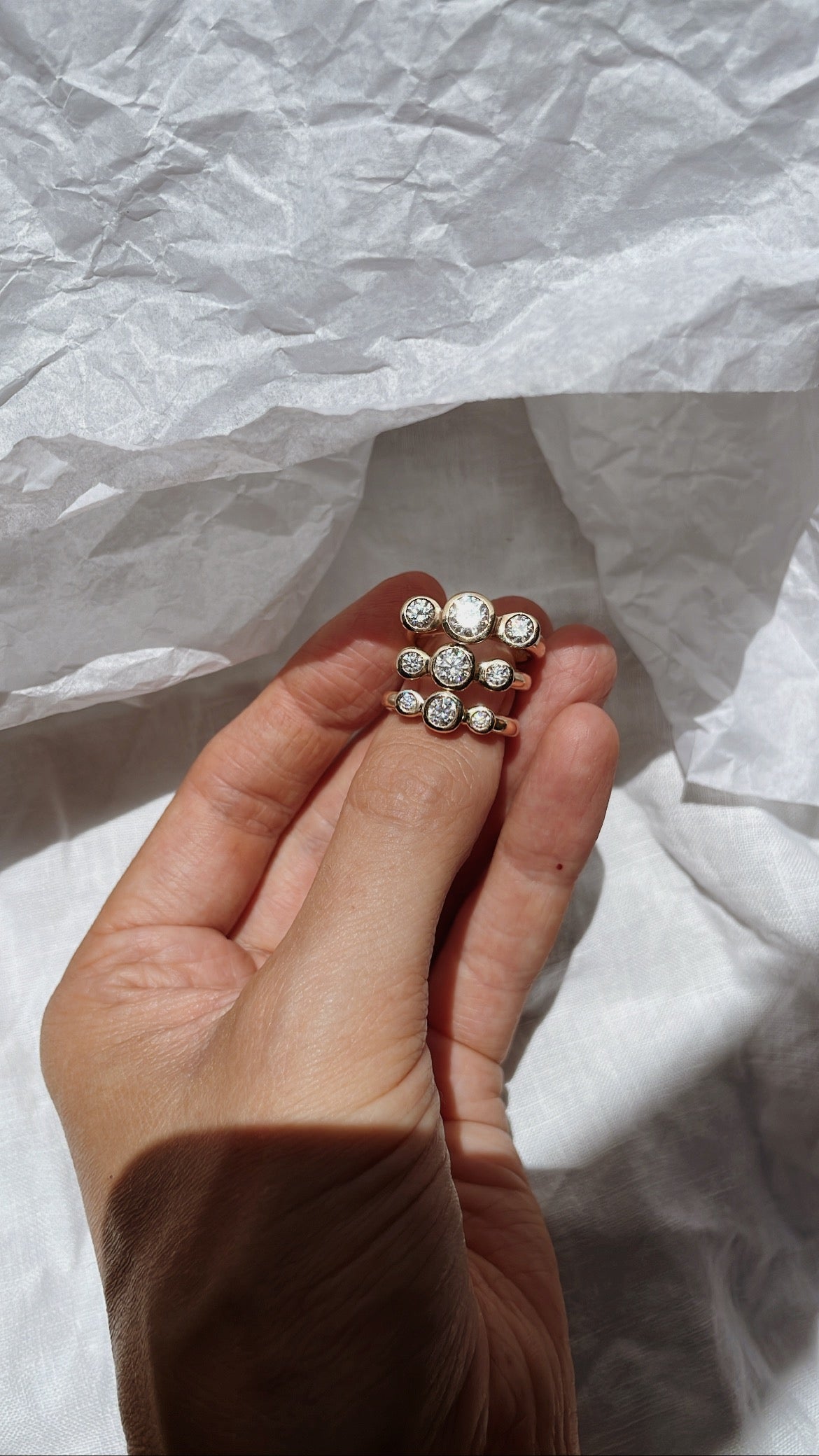At RUUSK, we believe in creating timeless jewellery made with purpose and intention. We’re big believers in quality over quantity and take care to source only the most beautiful gemstones. All of our pieces are made-to-order to embrace intentional purchasing, reduce landfill and create treasured heirlooms to be passed down generation to generation.
To encourage a meaningful connection with your very special piece, you can personalise each heirloom with your choice of stone.
We regularly work with diamonds and all RUUSK natural Clear Diamonds are conflict-free and purchased from accredited Diamond Suppliers. Every natural Clear Diamond 0.5ct and above comes with GIA certification (an internationally recognised Diamond Grading Reporting that documents the specific characteristics of your diamond).
Because we’re drawn to the universe’s magic and extraordinary origination of natural diamonds, we opt to use natural diamonds in our special pieces. However, we can also work with lab-grown diamonds upon request.
To help you decide on which diamond option might be best for you, we've put together some information below comparing natural and lab-grown diamonds.
What is a Natural Diamond?
A natural diamond has been formed deep in the earth as long as three billion years ago. Requiring extreme pressure and very high temperatures, conditions that only exist around 160km beneath the Earth’s surface, diamonds are formed when carbon atoms bond together under the extreme environment. They are then shifted to the Earth’s surface through volcanic activity, living in a type of volcanic rock formation (known as kimberlite pipes). Natural diamonds are born from the earth, infused with the magic of millions of years of transformation and growth and no two stones are the same.
What is a Laboratory-Grown Diamond?
Laboratory-grown (lab-grown) diamonds were first produced in a laboratory in 1971. Although, it wasn't until the mid-2010s that colourless lab-grown diamonds first appeared in the jewellery industry - they're still relatively new!
Today, lab-grown diamonds are created by two methods - high pressure, high temperature (HPHT) and chemical vapor deposition (CVD).
High pressure, high temperature (HPHT) diamonds are formed in a small capsule mimicking the high pressure, high temperature conditions that form natural diamonds in the Earth. Whereas, chemical vapor deposition (CVD) Diamonds are formed by breaking down the molecules of a carbon-rich gas (i.e. methane) into carbon or hydrogen atoms. These are then deposited onto diamond seeds to produce a diamond; if needed, additional treatments such as heat or irradiation will change a CVD-grown diamond's colour after the growth process.
Unlike the billions of years it takes to create a natural diamond, these methods typically require less than a month.
Lab-Grown vs Natural Diamonds
Because lab-grown diamonds have the same physical, chemical and optical properties as natural diamonds, the main difference is their origin. Distinguishing the two requires a trained gemologist using specialised and sophisticated equipment. Otherwise, to the naked eye, they look the same. Both are graded on the same 4Cs of a diamond (carat, cut, colour and clarity; you can read about this here) and each are available in a range of sizes, shapes and grading.
Lab-grown diamonds are becoming increasingly popular due to their lower cost and sourcing transparency. As lab-grown diamonds are man-made, they require less touch points to create and can be replicated, making them significantly cheaper than natural diamonds, particularly when looking at larger stone sizes. Although lab-grown diamonds don't require mining, they do require very high amounts of energy to be created, and in some studies this is shown as being on par with the amount of energy needed to mine a natural diamond. Luckily more lab-grown diamond manufacturers are now trying to offset their carbon footprint or are investing in renewable energy to address this.
Natural diamonds are rarer, being formed deep within the Earth and requiring volcanic eruptions to bring them closer to the surface. Unlike lab-grown diamonds, which can be readily created, natural diamonds are finite, making them more valuable and, therefore, also more expensive.
Ultimately, we're here to create the perfect piece for you. As everyone has different priorities, desires and budgets we're here to help guide you along the way. So if you would like a quote or more information on sourcing the right Clear Diamond for your very special piece, whether natural or lab-grown, please contact our team at enquiries@ruusk.com.
We can't wait to create a magical piece for you.





